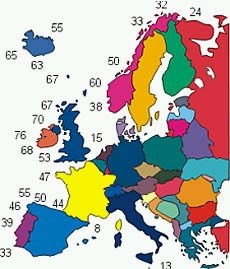Submitted by New Energy News Blog
There’s an update on Anaconda, a giant tube that is either an important solution to the capture of wave energy or has a great public relations representative in the UK because it seems to get more than its fair share of press.
Anaconda is made of plastic, the kind of durable plastic that channel-crossing hovercraft ride on. It is closed at both ends and filled with water. Anchored in the sea, one end faces oncoming waves. “Bulge” waves form inside the tube when a passing wave squeezes the tube. The bulge moves through the tube with the passing wave. At the tube’s far end the bulge, carried along by the wave’s force, turns a power-generating turbine.
John Chaplin, Professor of Fluid Mechanics at University of Southampton, has been awarded a grant to test Anaconda. Chaplin: “I get rung up once a month or so by mad inventors…They came here with various tubes they’d built in their garages. We tried the idea out in one or two tanks.. It seemed to have a very good prospect of escaping two big problems that all wave power devices have to face.”
The 2 problems: Getting energy on slow wave days and enduring the harsh ocean world.
Francis Farley FRS, a semi-retired professor of physics, and Rod Rainey, an oil and gas company specialist in offshore platforms, may have figured out how to deal with the 2 vexing problems.
The flexibility of the plastic allows Anaconda to match physical “resonance” with any wave size.
Chaplin: “The Anaconda… can achieve similar resonance by making the speed of the bulge wave – the natural speed of the bulge wave in the tube – match the speed of the water waves outside…”
Yet Ananconda is durable enough, like the hovercrafts, to sustain in harsh ocean conditions.
The full-sized Anaconda will be 100 tonnes, 200 metres long, 7 metres in diameter and produce 1 megawatt at a cost of 6p or less/kilowatt-hour.
Chaplin: “We could see the first full-size device deployed off the UK coast in around five years’ time…”
Another New Energy expert in the UK is not so sure. Professor Ian Fells, veteran of marine energy research: “They have to think very seriously how well this will cope with very large waves which occur now and then…”
There’s only way to find out: Throw it out of the boat and see if it floats.
 Over 20 means good wave energy potential. Look at all those 50s, 60s and 70s around the British Isles! (click to enlarge)
Over 20 means good wave energy potential. Look at all those 50s, 60s and 70s around the British Isles! (click to enlarge)
New wave power generation; An experiment to harnass the sea’s energy could be helping to produce power within five years, according to its supporters
Michael Pollitt, August 7, 2008 (UK Guardian)
WHO
John Chaplin and Grant Hearn, Professors of Fluid Mechanics, University of Southampton; Engineering and Physical Sciences Research Council (EPSRC); Francis Farley FRS, Professor of physics, retired and Rod Rainey, Professor/head of floating structures,WS Atkins Oil and Gas; Checkmate SeaEnergy
WHAT
– The EPSRC awarded Chaplin £430,000 to test the performance of the Anaconda wave energy converter invented by Farley and Rainey.
WHEN
– Rainey’s concept is based on the 1970s Lancaster Floating Bag of Professor Michael French.
– The EPSRC project (The Hydrodynamics of a Distensible Wave Energy Converter) will run 2 years.
WHERE
Testing will take place at the University of South Hampton in the UK.
WHY
– Chaplin’s (and Hearn’s) specialty is solving fundamental fluid mechanics problems and doing experiments in large water tanks.
– Farley has worked on wartime gunnery radar, particle physics and wave energy.
– Rainey is an expert on floating offshore structures.
– French’s Lancaster Floating Bag dampened wave action at harbour entrances. Rainey thought of capturing the energy the Bag was dampening.
– Checkmate SeaEnergy, which has a licence to manufacture, will participate in testing.
– EPSRC will test wave response (bulges, bends, twists, and stretches) and estimate power output with varying wave conditions and other parameters.
– Anaconda prototypes: 25 and 50 centimeters across with varying lengths.
 Still a research project. (click to enlarge)
Still a research project. (click to enlarge)
QUOTES
– Rainey, on early calculations investigating Professor French’s scheme: “Not fully convinced by his formulae, I tried another mathematical approach and discovered to my surprise that the bulge should grow rapidly along the tube, running just in front of the wave…”
– Farley, on testing The Anaconda: “Great fun, but rather messy…”
Debt Consolidation Says:
January 30th, 2009 at 3:15 am
Surely OKING TO CATCH A WAVE | Energy Stocks Blog is going to yield tons of stake just for the fact it\’s intriguing reading.
